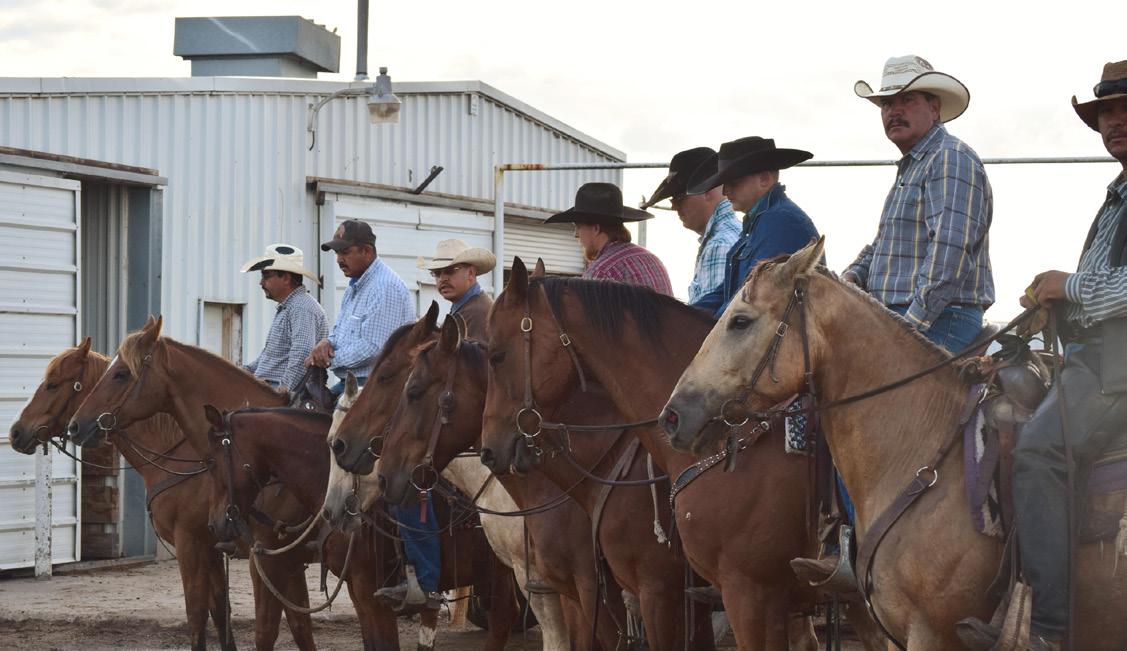
2 minute read
Developing the Sustainable Workforce
By: Quint Finney, Business Management
So, I’m talking with a friend of mine who happens to be a feedyard manager and I ask him, “What is the most consistent operational challenge that you deal with?”
Without pause, he said “That’s easy, people!” Then he said, “I need two cowboys and a feed truck driver....yesterday! I’ve got applications on file but none of the applicants have any experience. I just can’t find any help.”
Sound familiar? I’m guessing that anyone involved with staffing a crew at a feedyard can relate.
Having been blessed with the opportunity to be involved in the cattle feeding industry my entire life, I get it. There once existed an abundance of potential, experienced employees to draw from. Now there are very few. How did this situation come about?
We all know how difficult it is to staff a facility when we’re short-handed. Points to consider: WHY are we short handed? HOW are we going to attract productive people? WHAT are we going to do to maintain adequate staffing and achieve higher retention rates?
WHY are we short handed? The common theme, on the surface and arguably, is pay-scale. Why would someone choose to work a feed yard job, under sometimes less-than-desireable conditions, when they could do something else for equal or higher pay and not have to deal with those conditions? Fair question. A question that potential and current employees alike ask themselves.
Most feed yards are competitively positioned within the industry concerning compensation packages resulting in less variability between yards. There is more competition for people from other industry than there is within our own. The pay scales are different but, our industry typically provides more consistent employment.
We are generally reluctant to reduce staff during slow times because we don’t want to be behind when we get busy. People have to make a living but compensation shouldn’t be the sole motivator. Compensation speaks only to basic needs but does nothing to fullfill the need for achievement and recognition.
Some organizations have increased wages 50-75% yet their turnover remains unchanged (or is higher). Employees typically quit their boss...not their paycheck. They want more from their job than just a paycheck. Many organiza- tions miss the fact that most employees want to have a higher level of involvement in the process.
HOW are we going to attract productive people? Gone are the days of a multitude of experienced applicants coming through the door each week. Developing a culture that attracts productive employees is key. Obviously this is easier said than done and takes time.
What is the perception of current employees pertaining to the organization? Their perception of the organization is what the public (potential employees) see and hear. My friend Jim Whitt once told me, “Perception may not be the ultimate truth, but it is the ultimate reality.” Employee attitude towards the organization is important. It IS their reality.
What are the opportunities for growth and development? Do they feel their contributions are important? What is the PURPOSE of the organization and is it communicated and fully understood?
WHAT are we going to do to maintain staff and reduce turnover? It is said that everything rises and falls on leadership. Effective leadership and positive culture go hand-inhand. Leaders of succesful operations recognize the importance of developing a culture that will foster growth and are willing to put forth the effort and resources to develop and motivate people (work force).
They focus on people every day, not just when they make a mistake or quit their job. They realize that we have to look at people differently in terms of both hiring and development. Good leaders know the difference between training and development. To focus on leadership develpoment will enhance the culture of the organization and lend itself to reduction in turnover.










